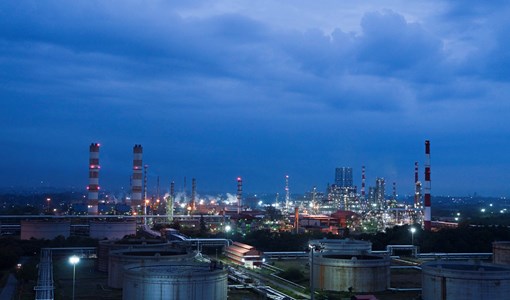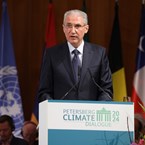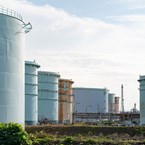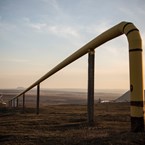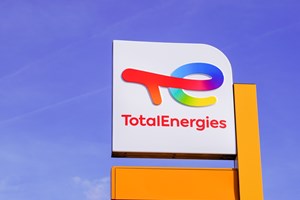U.S. can become largest exporter of LNG due to an abundance of reserves
Meg Gentle, CEO, Tellurian, speaks about the company’s drive to deliver cleaner energy to the world
What is your long-term outlook for the LNG industry?
Tellurian expects the LNG market to exceed 500 mtpa by 2025. With 14 per cent growth in 2019, the third consecutive year of double-digit growth, the LNG market has shown its resilience and is capable of reaching 700 mtpa. The success of LNG in supplying cleaner fuel to some of the world’s most congested cities depends only on the ability of LNG supply to keep pace. To meet this challenge, over $300 billion of capital will need to be committed in the next several years to construction projects worldwide.
We expect the U.S. to become the largest exporter of LNG, with abundant reserves that can be produced for less than $1.00 per mmBtu at the wellhead. The U.S. will need to export over 200 mtpa of LNG by 2025 to support current drilling expectations in the Permian basin.
At 200 mtpa of exports, U.S. LNG will have the potential to reduce global CO2 emissions by about 1 gigatonne, if used to displace coal fired power generation. At Tellurian we are inspired by our larger mission to deliver clean air to the world.
What are Tellurian’s plans to make U.S. LNG more accessible?
The United States is the largest natural gas market in the world – we produce 92 billion cubic feet of natural gas per day, or about 920 billion cubic metres per year. We expect natural gas production to grow another 25 per cent by 2025, bringing total U.S. production to about 115 bcf/d.
Some of that production is coming to the market because it is associated with oil production in the Permian Basin. In the second quarter of this year alone, an estimated one bcf of natural gas was flared every day in the Permian as a byproduct of oil production. Frankly, this is unsustainable.
The U.S. will need to export about 30 Bcf/d as LNG, or about 25 per cent of total natural gas production, in order to balance the market. Liquefaction capacity will therefore need to more than double to about 200 million tonnes. In addition, over $25 billion of new pipeline investment is needed to interconnect Permian basin production and de-bottleneck Gulf Coast infrastructure. Less than half of those investment dollars is committed today.
At Tellurian, we have developed the 27.6 mtpa Driftwood LNG terminal and approximately 1,000 miles of pipelines to interconnect the terminal with the Permian, Haynesville, Scoop Stack, and Marcellus-Utica natural gas basins. The infrastructure network will make four Bcf/d of U.S. gas production accessible to the global LNG market. We expect to complete construction and deliver LNG by 2023.
KEEPING THE ENERGY INDUSTRY CONNECTED
Subscribe to our newsletter and get the best of Energy Connects directly to your inbox each week.
By subscribing, you agree to the processing of your personal data by dmg events as described in the Privacy Policy.
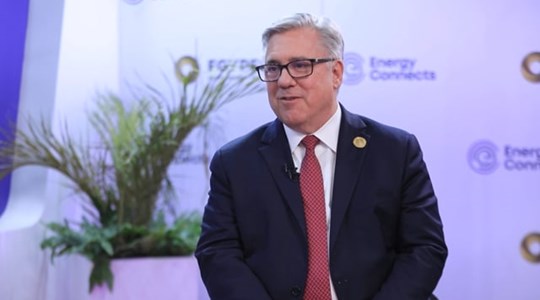
Chevron helping drive Egypt’s journey to become Africa’s energy powerhouse
Mar 11, 2024
Energy Workforce helps bridge the gender gap in the industry
Mar 08, 2024
EGYPES Climatech champion on a mission to combat climate change
Mar 04, 2024
Fertiglobe’s sustainability journey
Feb 29, 2024
P&O Maritime Logistics pushing for greater decarbonisation
Feb 27, 2024
India’s energy sector presents lucrative opportunities for global companies
Jan 31, 2024
Oil India charts the course to ambitious energy growth
Jan 25, 2024
Maritime sector is stepping up to the challenges of decarbonisation
Jan 08, 2024
COP28: turning transition challenges into clean energy opportunities
Dec 08, 2023
Why 2030 is a pivotal year in the race to net zero
Oct 26, 2023Partner content

Ebara Elliott Energy offers a range of products for a sustainable energy economy

Essar outlines how its CBM contribution is bolstering for India’s energy landscape

Positioning petrochemicals market in the emerging circular economy

Navigating markets and creating significant regional opportunities with Spectrum





